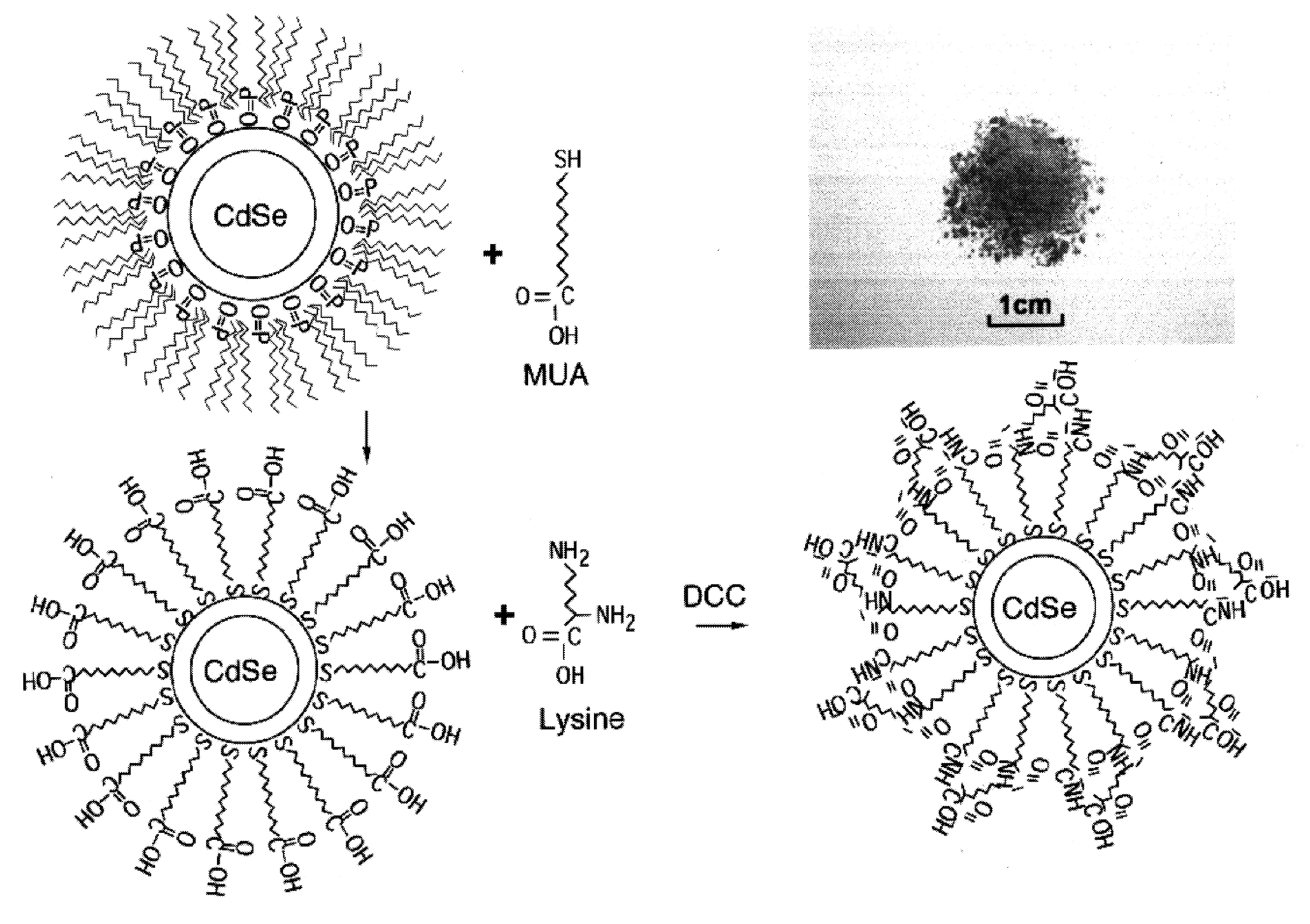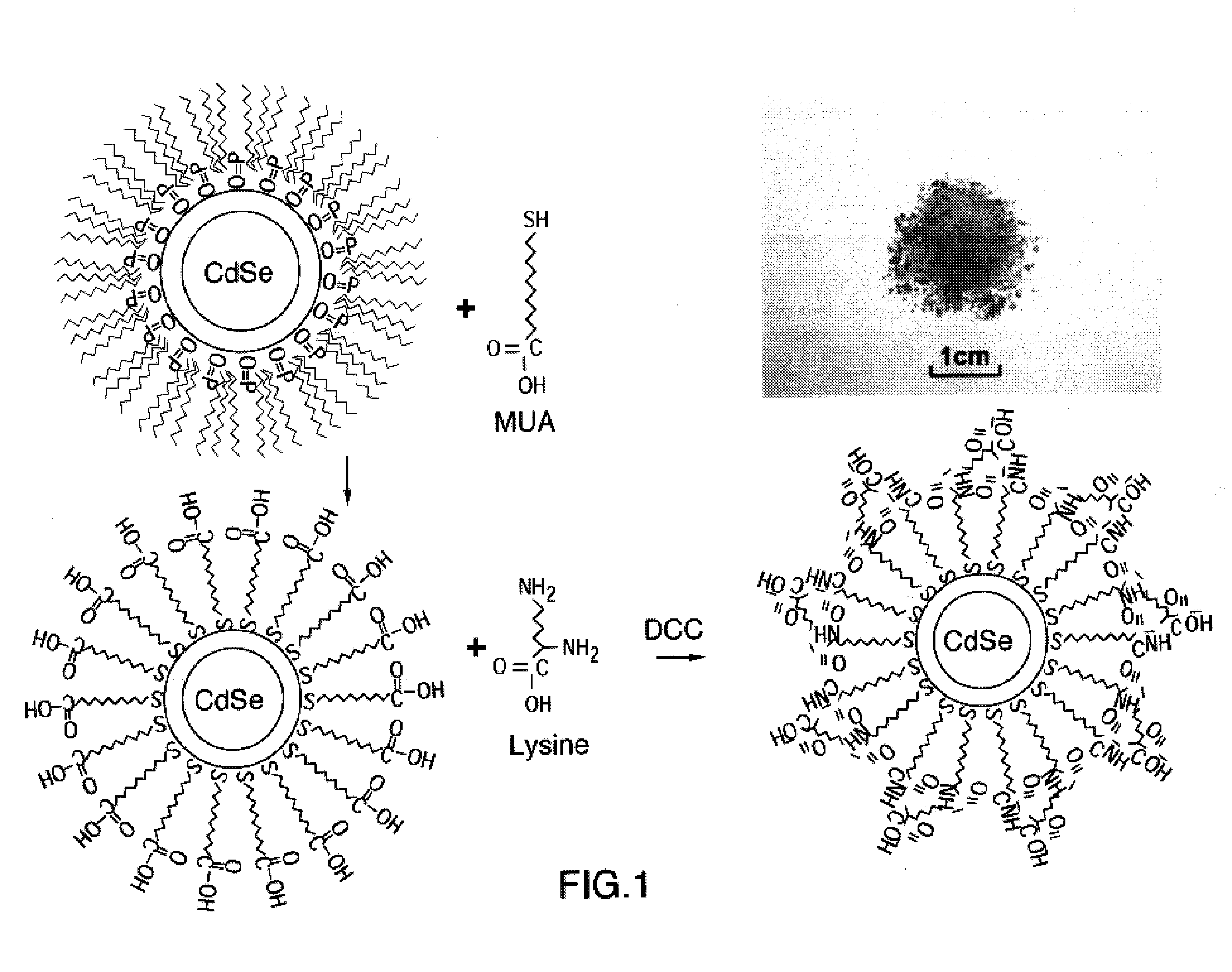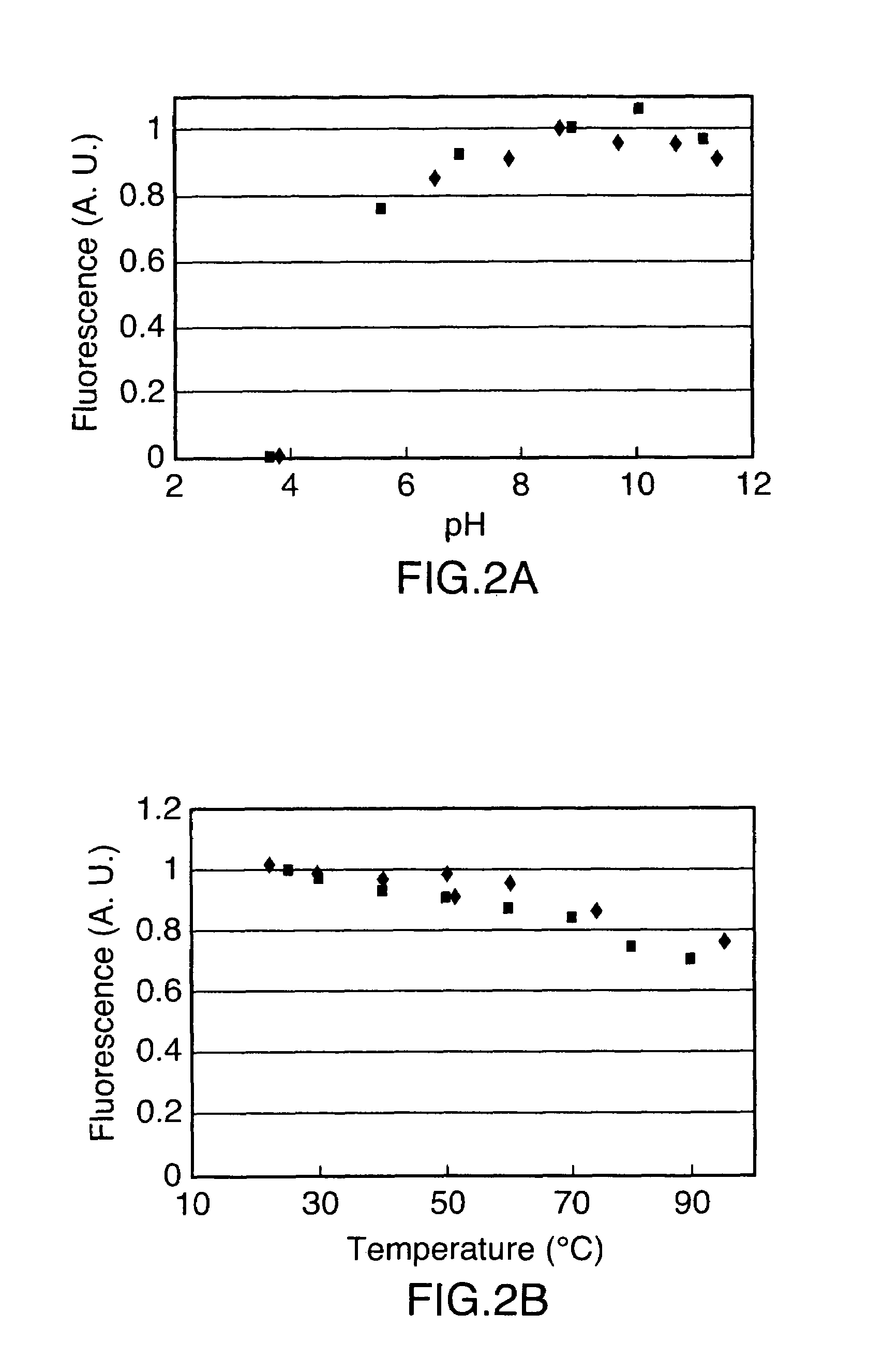Stable, water-soluble quantum dot, method of preparation and conjugates thereof
a quantum dot, water-soluble technology, applied in the field of water-soluble quantum dot production, can solve the problems of short film exposure time (e.g. up to 7 days) required in order to detect signals, fluorescent reporter molecules are often susceptible to rapid fading, and less stability
- Summary
- Abstract
- Description
- Claims
- Application Information
AI Technical Summary
Benefits of technology
Problems solved by technology
Method used
Image
Examples
example
[0032]The following example is included to illustrate the present invention, and should not be used to limit the claims in any way. The parts and percentages are by weight unless otherwise indicated.
Preparation of Quantum Dots (QDs) Coated with the Second Ligand
[0033]To obtain a quantity of water-soluble quantum dots for subsequent utilization in a cross-linking procedure, one gram of mercaptoundecanoic acid (MUA) (Aldrich, 95%) was added to a 3-neck flask and melted at 65° C. under argon to provide a liquid MUA solution. The molecules of MUA function as the second ligand coating the cap of the QD on displacing the first ligand from the cap of the QD. Quantum dots having a core comprising CdSe and a cap comprising ZnS were prepared using a known organometallic procedure. See the following references for a description of this procedure.
[0034]Hines, M. A., Guyot-Sionnest, P. “Synthesis of strongly luminescing ZnS-capped CdSe nanocrystals”J. Phys. Chem. B, 100, 468–471 (1996); Peng, X....
PUM
| Property | Measurement | Unit |
|---|---|---|
| exciton Bohr radii | aaaaa | aaaaa |
| size | aaaaa | aaaaa |
| size | aaaaa | aaaaa |
Abstract
Description
Claims
Application Information
 Login to View More
Login to View More - R&D
- Intellectual Property
- Life Sciences
- Materials
- Tech Scout
- Unparalleled Data Quality
- Higher Quality Content
- 60% Fewer Hallucinations
Browse by: Latest US Patents, China's latest patents, Technical Efficacy Thesaurus, Application Domain, Technology Topic, Popular Technical Reports.
© 2025 PatSnap. All rights reserved.Legal|Privacy policy|Modern Slavery Act Transparency Statement|Sitemap|About US| Contact US: help@patsnap.com



